THE BIG 4: Forward – Stop – Turn left – Turn right
I’ve had my worst experiences when the horse hasn’t taken notice of the four things which we have to teach them – go forward, stop, turn left, turn right. If I don’t have the control of one of these, cross country becomes a frightening experience. You have to have your horse listening to your aids. It’s the culmination of putting those four things together, that allows us to run and jump with our horses.
I really believe that horses are very generous and they are on our side. They can also become frightened, so it is important that we don’t ask them anything beyond their capabilities. You can keep them on your side by being quiet with them. They have to be believers in you, and understand what you are asking. I think that we as riders can get too aggressive when something doesn’t happen the way we want. You have to remember that the experiences the horses have, especially if they are bad ones, aren’t forgotten easily. It takes a long time to work through those bad experiences. If you develop a particular bogey jump, where you or your horse has had a bad experience, you need to go right back to step one and start at the bottom and work up.
When you’re riding across country, any problems that you have in the showjumping will become magnified because the difference between cross country and showjumping is the speed that we travel at, the surface that we run on, and the fact the fences don’t come down. So we definitely need control.
The Safety Essentials follow
Breeding your own eventing star? Go to www.ihb.com.au for the best eventing sires in the world… Like Diacontinus – already a Bundeschampionate winner.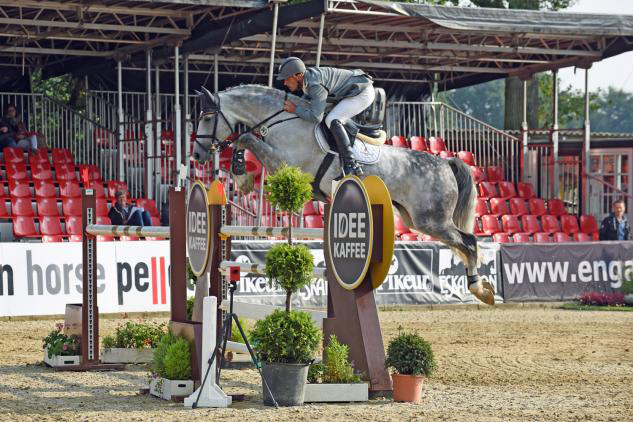
THE ESSENTIALS
Gear and rider safety
Rider safety is definitely a priority with me because I always like to be able to tell my own stories rather than have someone else tell them as I am being driven off in the ambulance. Rider safety comes about by what you wear:
– Obviously a helmet
– I definitely wear gloves because my hands are my life support. The other day I had a girl in my lesson who ended up with blisters on her hands from trying to stop her horse. The pain of the blisters affected the control of the horse and allowed the horse to run three or four kilometres per hour faster than it should have. So always wear gloves because your reins are your life line. I wear cotton gloves, I’m not too keen on leather gloves because leather on leather, or leather on rubber, can get slippery if it gets wet.
– Spurs and whips are important. You don’t necessarily have to use spurs just because you have them on. Always carry a whip. Again you don’t necessarily have to use the whip to assist your leg aid, but if you’ve got it, you can use it. It’s no good sitting in a bucket at the front of the horse float, you need it with you.
– The other thing I always use, especially as I’m based in England, is a body protector. Firstly because it’s compulsory at competitions or if I go and hire the facilities and school cross country somewhere. The requirement is for insurance purposes but I also think it is a good thing. But remember, just because you are wearing a body protector does not mean it is going to keep you alive. It is only going to help in as far as if you fall onto something sharp like the edge of a jump, it saves you in that area. It is not a body armour. It does not stop you from breaking bones. It doesn’t mean you can throw all the other things like control out the window.
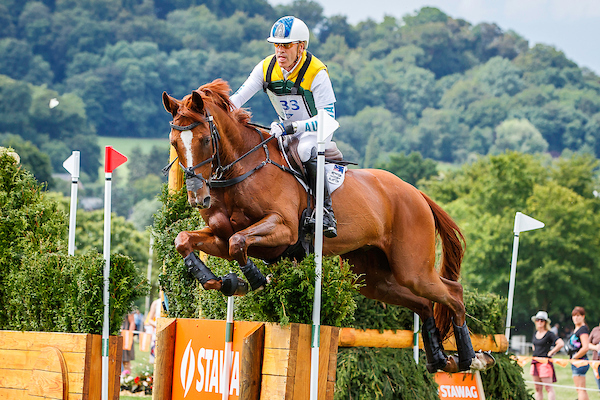
GEAR – The Hit List
Reins: How many people check their reins before each event? Not very many! Reins are very important because it’s very frightening if you can’t stop. I know of a situation where the rein broke and the rider jumped off and needed a total knee reconstruction because of the way he landed. Reins are much cheaper than paying for a knee reconstruction.
The kind that I prefer are the type that loop through the bit because they have minimum stitching. If you can’t get this sort, use the buckle sort of reins, not the ones with the billet as these have been known to pop out.
You need to check the stitching on your girth and stirrup leathers regularly as well.
Cross Country Boots: If a horse goes down in front and the hind legs comes through, they can end up cutting the tendon of the front leg. A horse can actually cut through the boot unless it’s specially designed to protect the tendon. But it is better to have any kind of boot on than nothing. The wrap around style boots are good if your horse has tendon problems, but these are not something I would use all the time.
It’s very difficult to give a horse tendon support. Tendon strength is part of your training program, not just something you think about on the day of the competition. It’s very difficult to find something to support a tendon or a ligament – but you can protect them. The major injury of tendons is a blow, heat and swelling comes to the area, then if we go and work the horse, that then weakens the tendon.
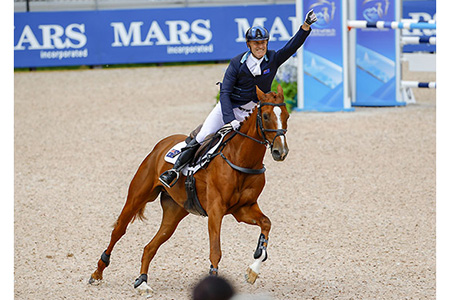
RIDER POSITION – keep yourself nice
Stirrup Length: You need to have good angle in your knee and also to be able to get yourself out of the saddle. You need to be able to ride shorter cross country than you do showjumping. Depending on what I’m riding, if it is a novice horse I would probably go up one hole from where I showjump. If I’m riding an advanced horse or a horse that pulls a lot, two to three holes. The shorter you ride the easier it is to control the horse that gets really strong. The closer you have your shoulder to your knee, the more leverage you can have against the horse, just with your body weight. If you ever get the opportunity to ride a racehorse, you need to have your stirrups short enough to get off the horse’s back. You just sit quietly off the horse’s back and let the horse gallop along underneath you. A horse’s back moves up and down when he gallops.
To give you another example, if I put your stirrups to dressage length and then I put you on a horse that was running off, you end up with just the strength of your arms trying to stop the horse. But if you ride short you can just sit against the horse in balance with your body weight which is far more consistent than pulling. So if your horse gets a little strong, ride a little shorter. With a novice horse, I like to have plenty of leg support there, giving him confidence and keeping him going forward when he sees things he’s not quite sure of.
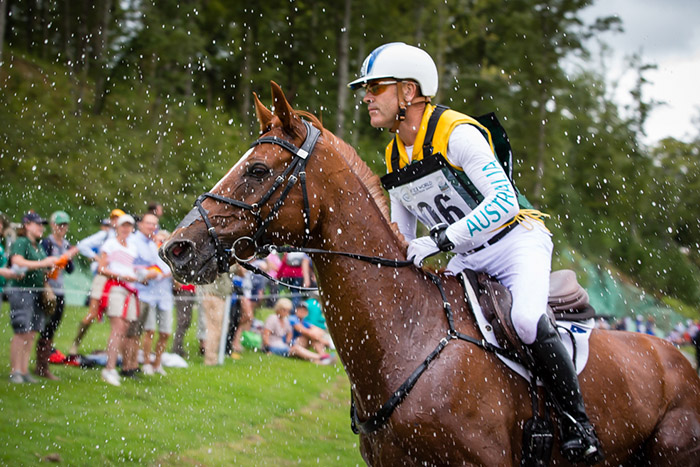
GETTING OUT OF PROBLEMS
When you’re galloping cross country and the horse makes a little mistake, you need to be able to calm the whole thing down.
We want the horse to know, if he gets into difficulties, if he slips, he can just take time with things, so they learn to get themselves out of trouble.
If a horse has slipped badly or hit a jump badly, just keep hold of the front end, keep hold of the reins, just sit quiet and balanced and try and support the horse. Let the horse find his feet, try and slow the whole thing down. Don’t pick up the reins, and grab his head and pull it up, then give him a kick to get him going. Let the horse take time to get through the difficulties. All you can do as a rider is sit still and give the horse support by keeping your leg just there, keeping your own balance, and keeping hold of the horse with the rein which gives support through the mouth.
I want my horses to be on my side, so I spend a lot of time reassuring them, and trying to make things easier for them. When you come to a jump, the horse is the one who has to decide to leave the ground. I can try to get him there right, but if he says no, there’s nothing I can do. You can push and pull and shove, but you cannot force an animal do anything.
You can’t force a horse to do something, they have to be trained do it. The Big Four again!
That’s why it’s so important that we don’t become too strong. Remember the basics of Cross Country Riding: horse control, rider control, safe gear and an intelligent line of attack.


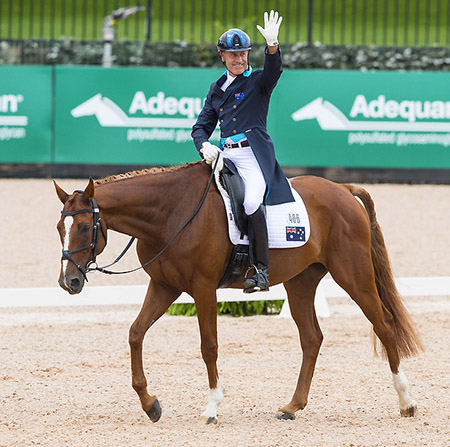
Thanks Andrew, great article! Love The Horse Magazine.
Dear Andrew, Chris and Roz.
It is wonderful to read this wisdom from such a well respected competitor and coach.
The comments on getting the horse to the fence and then giving him the freedom to do the job himself plus taking care to give a horse confidence in training or a lower level if they have trouble at a particular type of jump, are so important to riding XC safely.
Well done guys and thankyou for helping riders learn from such experience. Geoff Sinclair